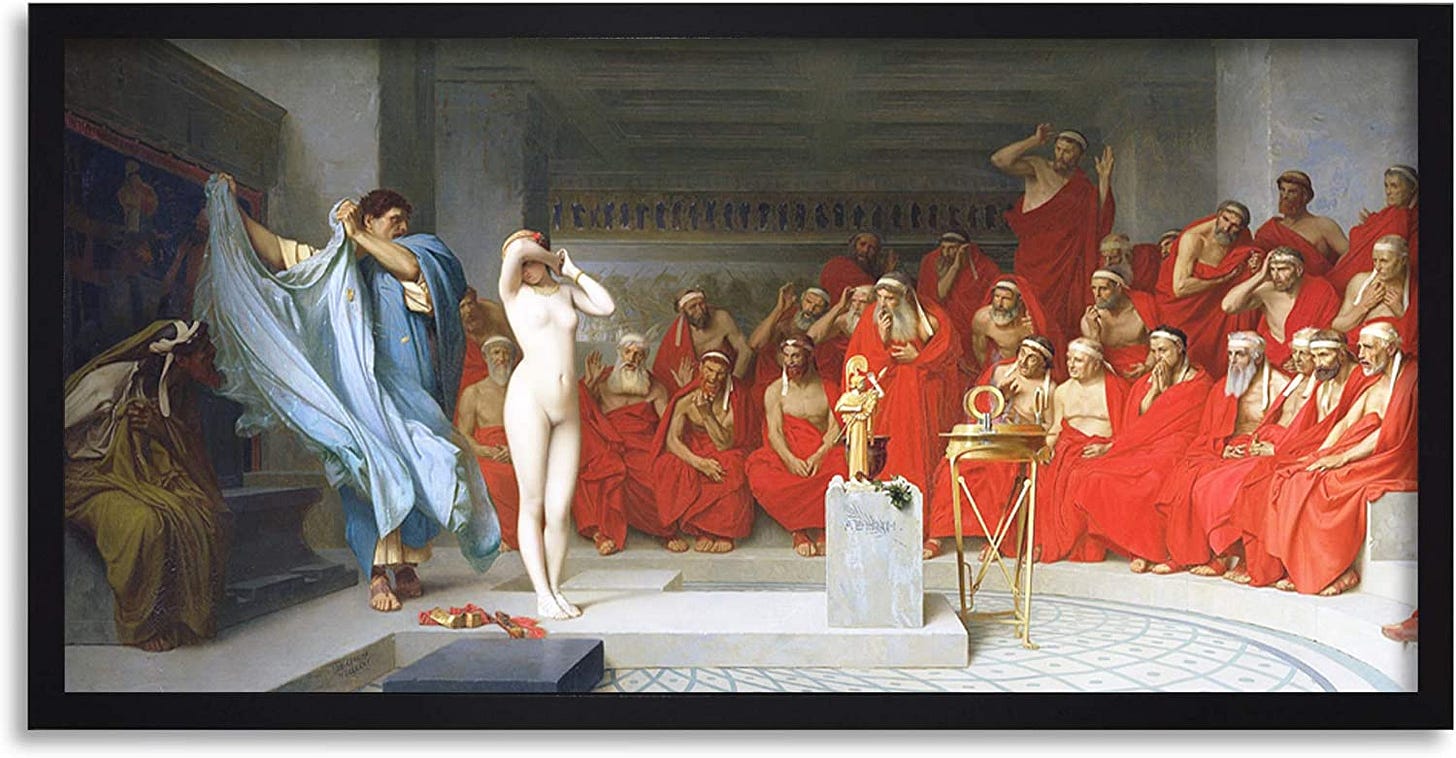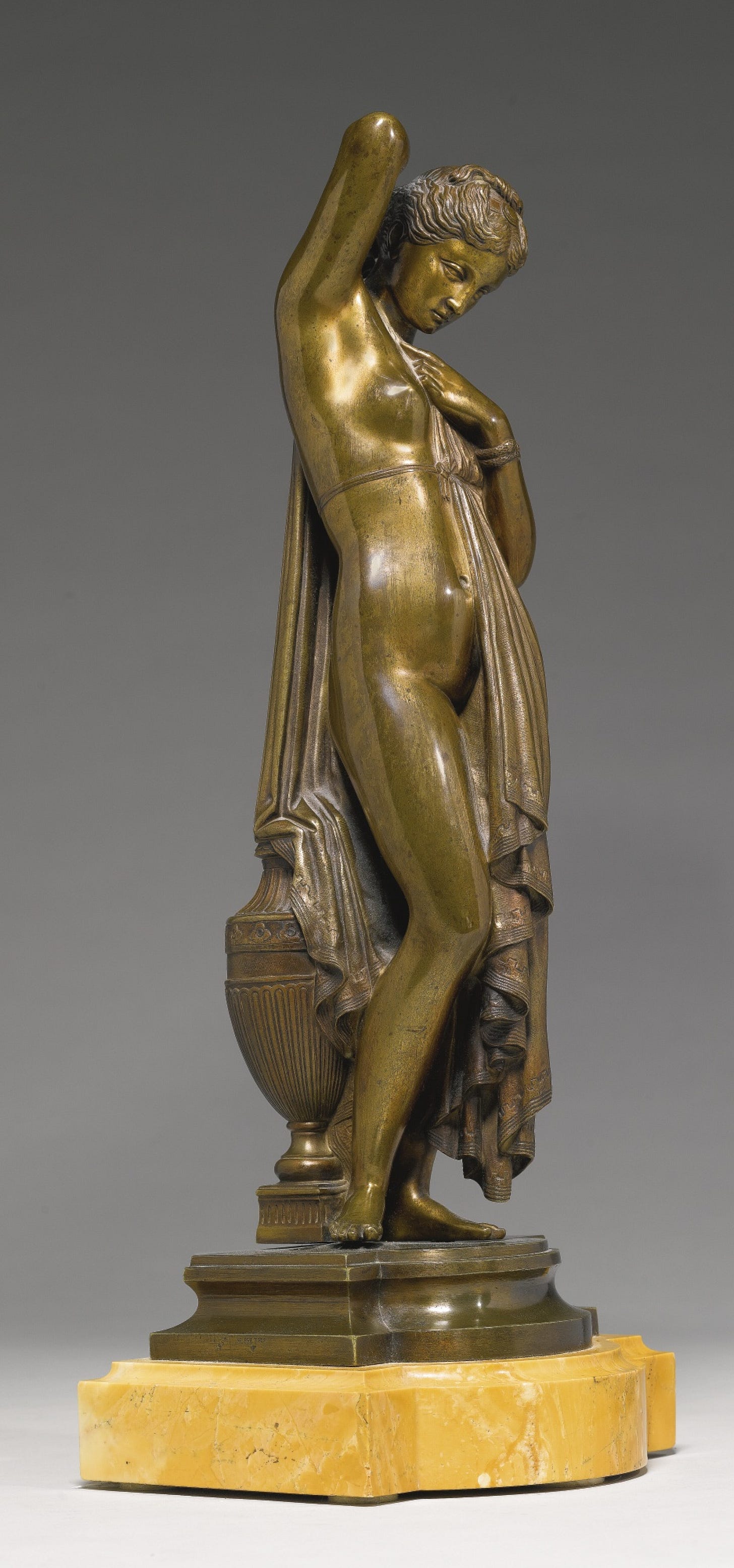Phryne, the Ancient Greek Courtesan Who Flashed Her Way to Freedom
Phryne was the most successful and sought-after courtesan in ancient Greece. Her beauty was the subject of inspiration for many famous Greek writers.
A Perfect Combination of Beauty, Brains, and Wittiness
The orator, Hypereides, tore off her clothes in the middle of the courtroom, revealing her naked, beautiful breasts, and roared in anger.
"O respected judges; only the gods could sculpt such a perfect body. Killing her is a blatant disrespect to the gods. How can you condemn such a woman who is beautiful enough to stand in for Aphrodite herself? "
Hypereides’ s pleas seem to have worked.The male jury quickly acquitted her as she walked out of the court triumphant.
The woman in question was Phryne (Greek for "toad"). She was the most successful and sought-after courtesan in ancient Greece. Phryne's beauty inspired many famous Greek writers, including Athenaeus, who elevated her to the status of a goddess in his work Deipnosophists.
And Phryne was much more than a dumb beauty. She was the perfect combination of beauty, brains, and wittiness, a compelling concoction considered very rarely in women of those times.
The Story of Phryne
Phryne was born around 371 BC in Thespiae but spent most of her life in Athens. Because of her stunning beauty, she became a much sought-after model, posing for various painters and sculptors, including Praxiteles, who made her the face of his most famous work Aphrodite of Cnidus, one of the most famous works of Greek art.
Her nude statue became the tourist magnet for the city of Cnidus, propelling her into being the most renowned courtesan of ancient Greece. She became so rich and powerful that she even proposed paying for the reconstruction of the walls of Thebes, which had been destroyed by Alexander the Great in 336 BC.
Peeved by the idea that a woman could put in such an offer, Phryne's request was rejected by the local authorities of Thebes. But her fame continued to grow.
But Phryne was more than just beauty. She interacted and held her own with some of the most famous intellects. She was also noted for her independent views, wittiness, and curiosity that could put the most famous Greek philosophers to shame. Many of those times' favorite writers (like Plutarch) conveniently ignore her intelligence in favor of her exquisite physical body.
A good number of the anecdotes showcasing Phryne’s wit and education are mentioned n the book Deipnosophists by Athenaeus, who calls her a goddess of wordplay and practical thinking. Athenaeus also goes a bit overboard when he describes her supposedly overpowering beauty in the below sentences.
"Phryne was a wonderful woman, even in those parts of her person which were not generally seen: on which account it was not easy to see her naked, for she used to wear a tunic which covered her whole person, and she never used the public baths. But on the solemn assembly of the Eleusinian festival, and the feast of the Poseidonia, then she laid aside her garments in the sight of all the assembled Greeks, and having undone her hair, she went to bathe in the sea; and it was from her that Apelles took his picture of Aphrodite Anadyomene; and Praxiteles the sculptor, who was a lover of hers, modelled the Aphrodite of Cnidus from her body.”
Athenaeus also recorded that Phryne was possibly the wealthiest and most potent self-made woman of her time.
Phryne’s Trial and Legacy
Around 340 BC, Phryne was accused of affronting the gods by appearing nude during a religious ceremony. At her trial, the orator Hyyperides -her defender and one of her lovers- ripped Phryne's robe open and exposed her to the court.
It seemed to have worked. The judges ruled in Phryne's favor after the inspired action of Hypereides, and her story went on to inspire many works of art, including the iconic painting Phryne before the Areopagus by Jean-Léon Gérôme, the 1904 painting Phryne by José Frappa and the sculpture Phryne Before the Judges, by Albert Weine.
Phryne became one of the most famous women of her day, celebrated in word, painting, and stone. Her story has survived thousands of years simply because it became the ultimate symbol of freedom against sexism and repression and advocated for women's equal rights.
Yes, some might argue that some of her choices in life weren’t the most ideal or moral for a lady. But then she created her own space and a strong identity at a time when women just lived a cloistered existence under the ever-perpetual male control.it is this fiercely independent streak of hers worth remembering and saluting from her nearly forgotten annals of history.
As R. H. Sin has rightly said.
“She’s proof that you can walk through hell and still be an angel.”
Sources
· Phryne: The Ancient Greek Courtesan Who Disrobed For Her Freedom
· Phryne, The Ancient Greek Prostitute Who Flashed Her Way to Freedom
· Phryne
· Phryne was put on trial and acquitted
· Ancient It Girl: Phryne, the Greek Courtesan
· Greek Legend Tells How A Prostitute Escaped Death Just By Doing This One Simple Act






